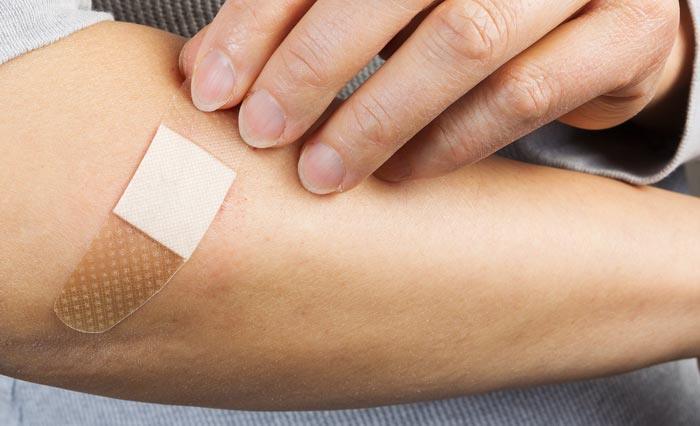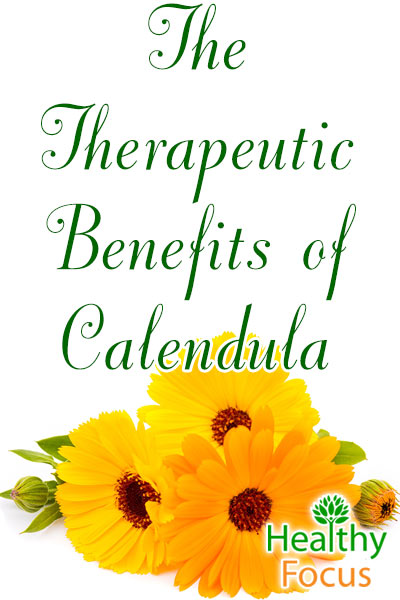Last Updated on February 13, 2018 by Marc Seward

Calendula
Calendula which is known as pot marigold or by its scientific name Calendula Officinalis. It is a beautiful flower native to the Mediterranean region and parts of Southwest Asia. Perhaps unfairly referred to as the poor man’s saffron, it has been used in cooking as a food coloring and the petals eaten in salads.
Its rich and beautiful red and orange colors have also seen calendula used in religious ceremonies, as a dye and added to potpourris and many people simply enjoy owning and adorning their houses with them. Apart from its practical and ornamental uses, its petals have been employed for medicinal purpose for hundreds of years, probably dating back as far as the 12th century.
It has traditionally been used to relieve menstrual cramps, treat upset stomachs and ulcers and for its wound healing and skin enhancing benefits. These days, the petals are still harvested for medicinal reasons and it can be found as a major ingredient in lotions, salves, creams, ointments and tinctures. While it is most commonly applied topically, it is also possible to make teas from dried calendula petals. Calendula belongs to a different genus to the garden marigold plant which people often grow in their gardens.
Therapeutic Benefits of Calendula
An important feature of calendula is its high flavonoid content; flavonoids are antioxidants which protect us from cellular damage and consequent disease and illness. It also has proven anti-inflammatory, antibacterial and anti-fungal properties which give calendula a good range of therapeutic uses though its main use these days is for skin care and healing.
Research show that Calendula’s anti-inflammatory properties work similar to ibuprofen as a COX-2 inhibitor (1). There is also research supporting Calendula as a powerful wound healer (2).
For the Skin
Calendula cream is very well known for its ability to treat the skin and can be used by those with dermatological conditions or simply to keep your skin looking smooth, shiny and free of blemishes. It is extremely useful for soothing and moisturizing dried and chapped skin and there is already preliminary evidence that it might prevent dermatitis. Research show it to be more effective than trolamine at preventing dermatitis in cancer patients (3).
It is also used to soothe the symptoms of both eczema and psoriasis with great effect. Calendula is also used to reduce wrinkles and make skin appear more youthful. It is also useful in fighting acne. A combination of its antibacterial properties and healing properties make it a useful tool to treat acne. Calendula cream was shown to potentially improve collagen synthesis in skin (4) which is why it appears to have so many uses.

Cuts, scrapes and wounds
Ointments or tinctures made with calendula can safely be applied to the skin to treat cuts, bruises and burns. Animal studies have demonstrated that calendula helps speed up the healing process of minor wounds. Human studies with Calendula have shown it can help wound healing time with venous leg ulcers (5).
Researchers believe that this might happen because calendula promotes increased flow of blood to the wounded region and helps our bodies to produce fresh tissue.
As well as expediting the healing process, calendula prevents the spread of infection caused by cuts and wounds and soothes any inflammation or irritation of the skin. By the same token, calendula is an effective treatment for insect bites and stings and is also recommended to treat sunburn.
Inflammation
Applying calendula topically does not only benefit the skin; it also works wonders on sore and aching muscles. Because of its anti-inflammatory compounds it can be applied to reduce joint and muscular swelling caused by injury. It might be useful for people suffering from rheumatism and it is also used to treat varicose veins, ulcers, hemorrhoids and chilblains.
Baby care
Anybody who has or has had children knows that diaper rash can be very painful for the child and can cause parents to have more than a few sleepless nights. The good news is that calendula can be safely used on infants to ease the pain and irritation associated with diaper rash.
Fungal infections
Because calendula possesses anti-fungal activity, it is a useful weapon to deploy for those suffering from common and uncomfortable fungal infections. Calendula is effective in treating athlete’s foot, jock itch, ringworm and candida.
Ear infections
Calendula is an ingredient in certain ear drops used in the treatment of children’s ear infections. Several studies have demonstrated that children treated with calendula ear drops experienced no side effects suggesting that it is safe to use.
Menstrual cramps
Calendula is thought to have some anti-spasmodic activity and has traditionally been used by women suffering from painful menstrual cramps.
Sore Throat
A homemade Calendula tea can help relieve sore throat symptoms. The antimicrobial and anti-viral properties may help fight infections locally. Either a tea or gargle can help reduce sore throat symptoms.
Other possible uses
Because of its antimicrobial properties, calendula can be used for oral hygiene specifically for sores, gum disease and mouth ulcers. There is no evidence but it has been used and might be effective for stomach cramps, muscle spasms and fever. Anecdotal evidence also suggest calendula tea may help reduce menopause symptoms such as hot flashes.

How to make your own calendula oil
The commercially available oil of calendula is extracted by a process of steam distillation. It is practically impossible to derive a 100% pure essential oil from calendula petals so the finished product is actually an infusion rather than pure extract. The petals are usually steeped in an oil like olive oil in order to extract the oil from its flowers.
Calendula oil and products containing calendula such as ointments and creams are readily available, you might want to try making your own calendula oil using just a few ingredients and by following a couple of simple steps.
Ingredients
- Calendula petals dried
- Carrier oil : olive oil, sunflower oil or sweet almond oil work well
- A glass jar
There are two methods to make your own calendula oil; cold infusion or hot infusion.
The cold infusion method is preferable as it protects against heat damage and produces a stronger end product while the hot infusion method is inferior but much faster. When you have finished, your calendula oil can be used as a body lotion, a baby oil or as a great home remedy for rashes, dry skin and chapping.
Cold infusion
- Take a clean, dry jar and add your calendula petals.
- Take your chosen carrier oil and add it to the jar covering the petals by about an inch.
- Put the lid on the jar and leave it in a sunny place for a month to infuse.
- After 4 weeks, drain the oil into a clean lidded container.
- You can store and use the oil for up to a year.
Hot infusion
- Put the petals in a jar as with the cold infusion method.
- Again fill the jar with carrier oil.
- Now just throw the contents of the jar into a saucepan making sure you add the oil and the petals.
- Heat up and simmer the mixture over a low heat for 4 hours making sure that you stir it from time to time.
- Allow it to cool and remove the petals then pour the oil into a clean container.
- You can store the oil for up to a year.

Calendula Tea
Calendula tea can be bought commercially or made at home if you have access to the flowers. You can add other herbs to tailor the treatment.
To make your own Calendula tea:
- Infuse 1 teaspoon of dried Calendula flowers with boiling water
- Cover and let steep at least 15 minutes
- A sun tea could also be done but would require 4-6 hours.
- For a super sore-throat fighter add Manuka honey to the tea.
Tea’s will not last as long as the oil preparations and should be stored in the fridge and used within 1-2 days of making.
Precautions
Although herbs have a very long and distinguished history for treating illness and strengthening our bodies, it is always recommended that you take care before using them as a remedy. As far as we know, calendula is perfectly safe to apply topically but you should not apply it directly onto an open wound without medical supervision. Research has indicated that calendula is safe for both children and adults.
Pregnant and nursing women are advised never to take calendula orally and to be cautious before applying it to their skin because it may affect menstruation. There are no known adverse interactions between calendula and prescription medications when calendula is used topically. In theory however, taking calendula orally might interact with sedatives, diabetic medication and medicines used to treat hypertension.
1) http://www.ncbi.nlm.nih.gov/pubmed/19374166
2) http://www.ncbi.nlm.nih.gov/pubmed/19601397
3) http://www.ncbi.nlm.nih.gov/pubmed/15084618
4) http://www.ncbi.nlm.nih.gov/pmc/articles/PMC3931201/
5) http://www.ncbi.nlm.nih.gov/pmc/articles/PMC3841996/

Leave a Reply
You must be logged in to post a comment.